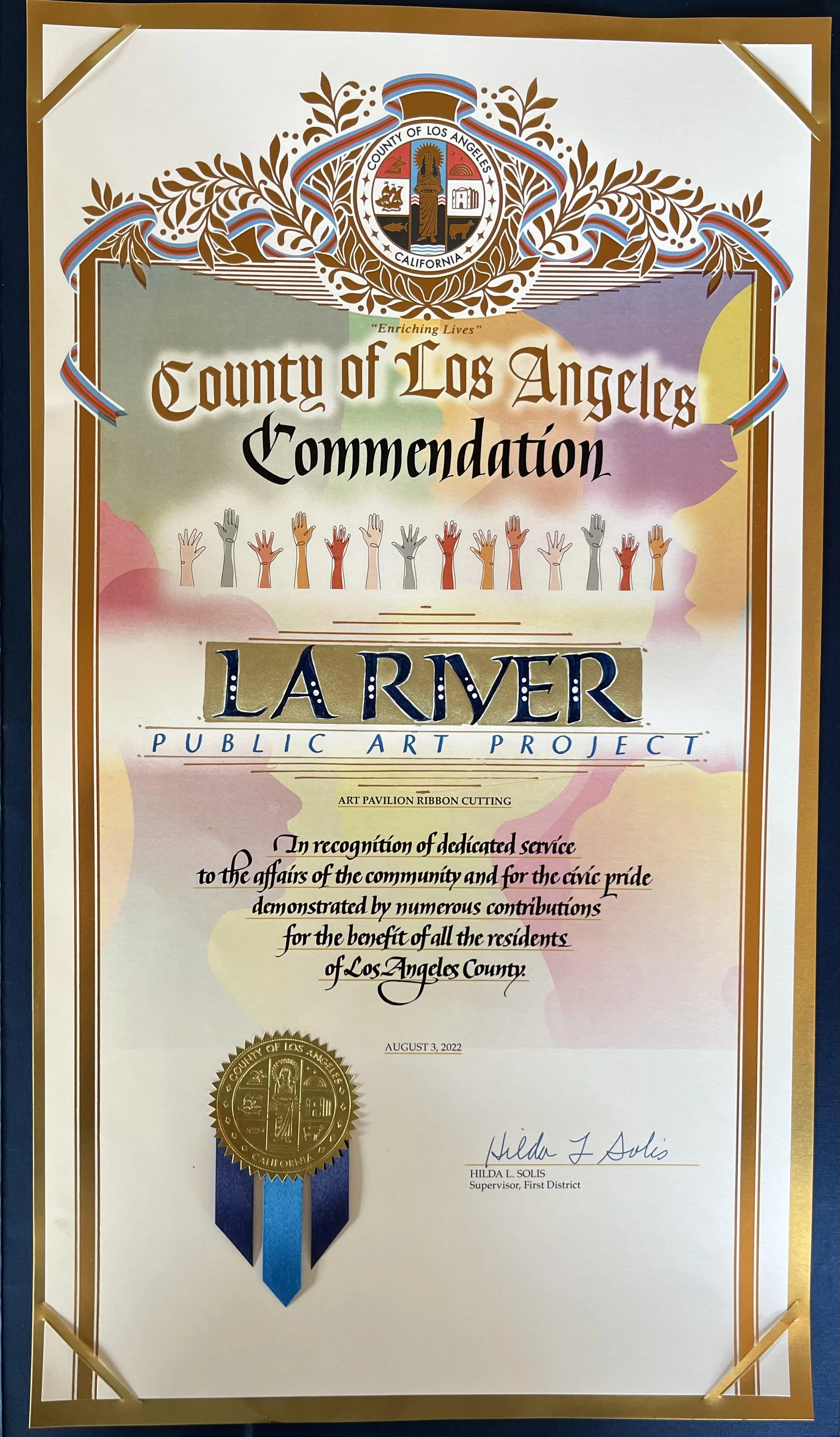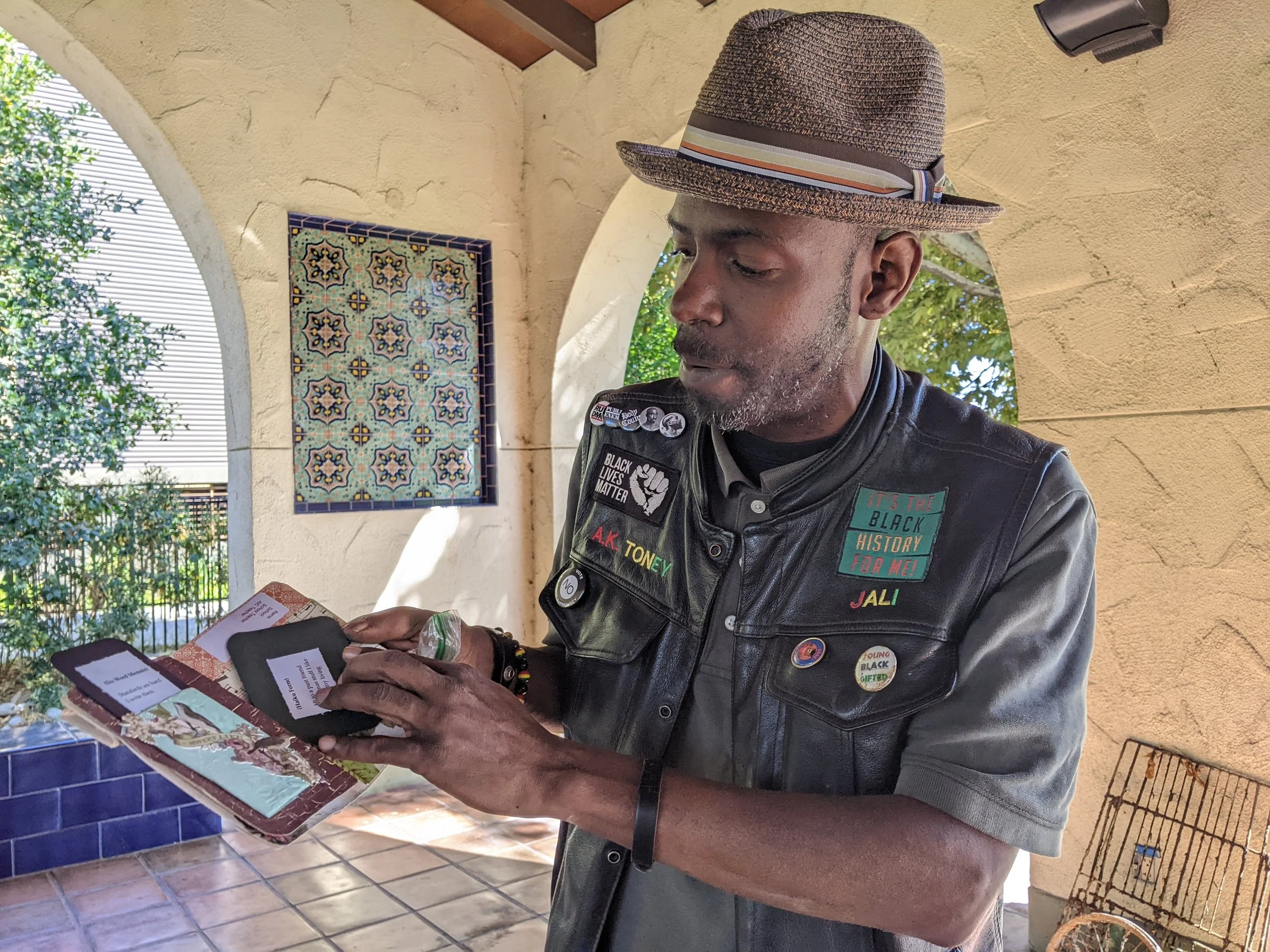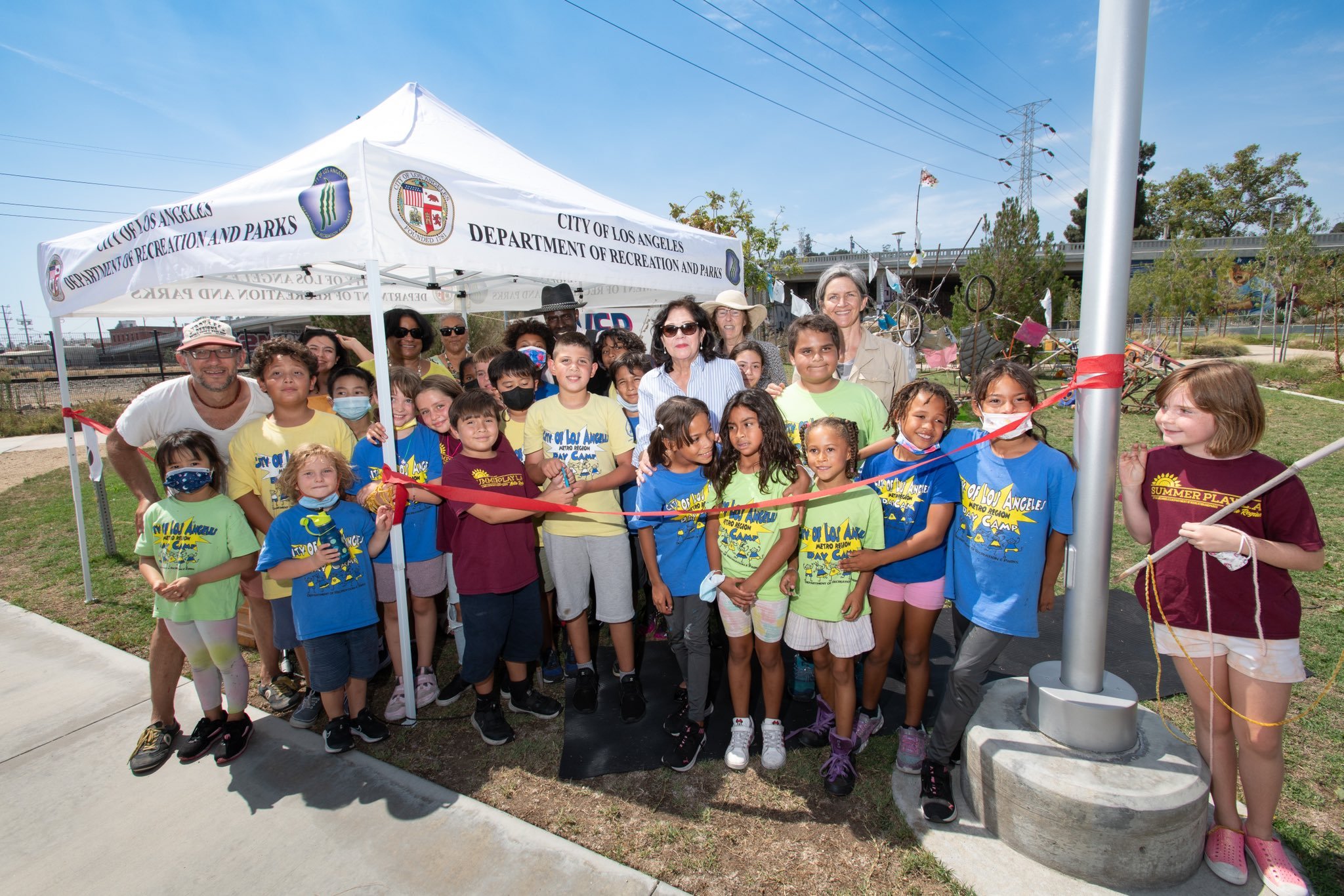
In this successful pilot project our campers learned about how social and ecological justice go hand-in-hand, how we are all connected, that Los Angeles was called Tovangaar for thousands of years by its First Peoples, how the river came to be channelized, and that public art can be transformative!
Our curriculum encouraged 50+ kids to think in words and pictures by drawing from river-related word banks they generated with our teaching artist, the poet, A.K. Toney, as they created their own hand-made poetry books.
Knowledge became embodied as they played games foregrounding our interconnectedness, moving and improvising with our lead artist, Marc Herbst, through the riverside landscape, discovering its animal residents from the present and past whom we hope to welcome back to the river one day by being better stewards and collborators with our environments.
Our director, Jenna Didier, guided an approach to public art and place making grounded in site and community-based considerations: encouraging kids to think about the animals human and otherwise that would experience -and maybe make homes in - their work as they traced solar paths, felt the wind, imagined where water flows when it rains and learned the cardinal points at the site as they built new works of art using debris the river left behind.
Our Indigenous Advisors, Tina Orduno Calderon and Kelly Caballero guided our principles and approach towards regenerative building practices like using found objects and biodegradable attachment methods. Their stories remind us that we are not the center of the world, that the First Peoples understood this and lived in a way that nurtured the land and the waters, acting as caretakers, treating all Nature as part of their vast family, resulting in a lush landscape supporting multiple forms of life.

















